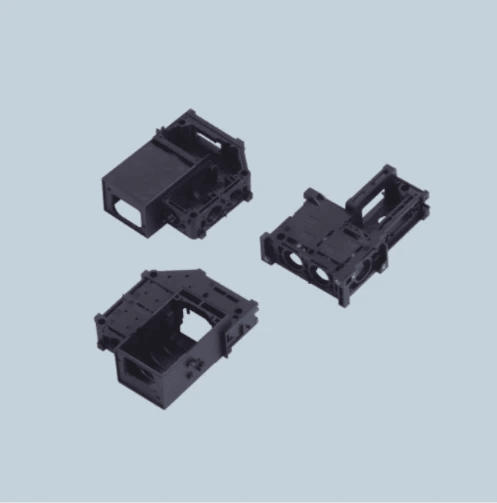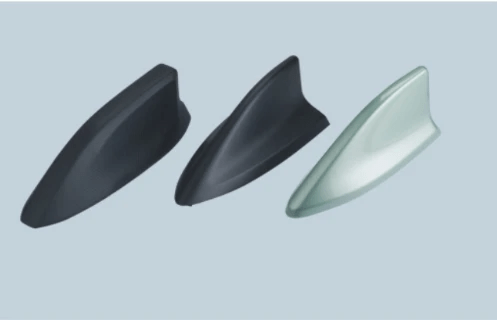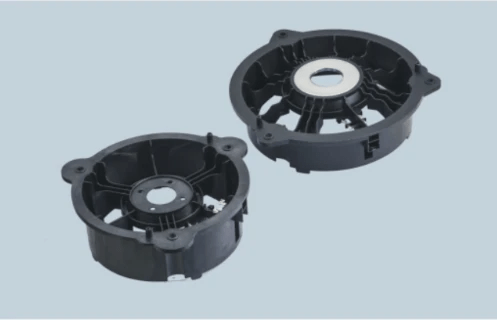Introduction

Welcome to the fascinating world of mold-making, where creativity meets precision! Whether you're a hobbyist looking to explore how to make a hard plastic mold or a professional seeking to refine your craft, understanding the fundamentals is essential. This guide will take you through everything from the basics of molds to advanced techniques for crafting custom designs.
Understanding Mold Basics
Molds are essential tools that allow us to replicate objects with accuracy and consistency. They can be made from various materials, but when it comes to durability and versatility, hard plastic stands out as a top choice. If you've ever wondered what can I use to make a hard mold?, you'll be pleased to know there are numerous options available that cater to different needs and projects.
The Importance of Custom Molds
Custom molds play a crucial role in various industries, from manufacturing toys to creating intricate art pieces. They enable creators to produce unique items tailored specifically for their needs, ensuring both quality and efficiency in production. So, if you’re pondering how do you make hard plastic at home? or how to mold PVC plastic at home?, understanding the significance of custom molds will inspire your creative journey.
Overview of the Mold-Making Process
The process of making molds involves several key steps that transform raw materials into functional tools for replication. First, you’ll need suitable supplies—this raises the question: what can I use to make a plastic mold? Once you've gathered your materials, you'll follow specific techniques designed for both beginners and experienced makers alike. By mastering these processes, you'll not only learn how to create durable molds but also enhance your skills in crafting high-quality products.
Choosing the Right Materials

Selecting the right materials is crucial when embarking on your journey of how to make a hard plastic mold. The choice of materials not only affects the quality and durability of your mold but also determines the ease of the molding process itself. With a myriad of options available, understanding what can be used is essential for achieving optimal results.
What Can I Use to Make a Plastic Mold?
When pondering what can I use to make a plastic mold, it’s important to consider various materials that suit your project’s needs. Common choices include silicone rubber, polyurethane resin, and thermoplastics like ABS or PVC. Each material has its unique properties; for instance, silicone is flexible and great for intricate designs, while hard plastics provide sturdiness and longevity.
If you’re wondering how do you make hard plastic at home, you might want to explore using epoxy resins or even casting plastics that can be molded into specific shapes. These materials are often user-friendly and offer excellent results for DIY enthusiasts. Remember, choosing the right base material will significantly impact your final product's quality.
Exploring Hard Plastic Options
Exploring hard plastic options opens up a world of possibilities when creating molds. Popular choices include acrylic sheets and polycarbonate, both known for their strength and clarity—perfect if you want to see what’s happening inside your mold! Another great option is high-density polyethylene (HDPE), which offers excellent chemical resistance and durability.
For those curious about how to mold PVC plastic at home, using PVC sheets can be an effective solution as they are relatively easy to work with while providing good rigidity in molds. Whether you're crafting small items or larger pieces, understanding these options will help you select the best hard plastic that meets your project's requirements.
Selecting Suitable Mold-making Supplies
Once you've decided on your primary material, selecting suitable mold-making supplies becomes essential in ensuring success in your project. You’ll need tools such as mixing containers and spatulas for preparing resin mixtures or silicone compounds effectively—these little helpers can make all the difference! Additionally, don’t forget about release agents; they prevent sticking between your mold and cast piece.
When considering what can I use to make a hard mold? Think about incorporating additional elements like reinforcement fibers or fillers that enhance strength without compromising flexibility where necessary. With these supplies in hand, you'll be well-equipped to tackle any challenges that arise during the molding process.
How to Make a Hard Plastic Mold

Creating a hard plastic mold can seem daunting, but with the right guidance, it can be an exciting and rewarding project. Whether you’re looking to replicate an object or create something entirely new, understanding how to make a hard plastic mold is crucial. This section will walk you through the essential steps, tools, and tips for achieving precision in your mold-making endeavors.
Step-by-Step Guide to Mold Creation
To start your journey on how to make a hard plastic mold, first gather all necessary materials and tools. A common approach is to use silicone rubber as the primary molding material because of its flexibility and durability. Begin by preparing your model: clean it thoroughly and apply a release agent to ensure easy removal later.
Next, mix your silicone according to the package instructions and pour it over your model in a container that can withstand the weight of the liquid. Allow this mixture to cure completely; curing times vary based on product specifications but generally take several hours. Once cured, carefully remove your newly formed mold from the original model—voilà! You now have a hard plastic mold ready for use.
Essential Tools for Mold Making
When exploring what can I use to make a hard mold or what can I use to make a plastic mold, having the right tools is essential for success. Key items include mixing cups for preparing silicone or resin mixtures, spatulas for stirring, and containers that will hold your materials during curing. Additionally, you’ll need safety gear like gloves and goggles because some chemicals used in molding can be hazardous.
A scale is also valuable for measuring components accurately if you're working with two-part resins or silicones that require precise ratios. For those interested in how do you make hard plastic at home using molds created from PVC plastics, consider adding heat-resistant gloves and molds designed specifically for high temperatures as well.
Tips for Accurate Mold Design
Creating an accurate design is vital when learning how to make a hard plastic mold effectively. Start by sketching out your design on paper; this helps visualize proportions and dimensions before diving into actual production. Pay attention to undercuts—features that may complicate removing the final product from its mold—and adjust accordingly by incorporating draft angles into your design.
Another tip involves using registration keys or alignment features within your molds so they fit together perfectly during casting processes later on. Lastly, always test small batches before committing fully; this allows you room for adjustments without wasting materials or time while mastering how to mold PVC plastic at home effectively.
DIY Mold Techniques

Creating your own hard plastic molds at home can be a rewarding and cost-effective endeavor. With a little creativity and some basic materials, you can learn how to make a hard plastic mold that suits your specific needs. This section will guide you through the process of making hard plastic at home, utilizing common household items, and weighing the pros and cons of DIY techniques.
How Do You Make Hard Plastic at Home?
To embark on the journey of mold-making, you first need to understand how to make hard plastic at home. One popular method involves using epoxy resin or polyurethane, both of which can be readily sourced from craft stores or online retailers. Begin by measuring equal parts of the resin and hardener, mixing them thoroughly in a disposable container before pouring it into your chosen mold.
Once you've poured the mixture into your mold, allow it to cure as per the manufacturer's instructions—usually around 24 hours for full hardness. After curing, carefully demold your creation; this is where you'll see how well you've mastered the art of making a hard plastic mold! Remember that patience is key; rushing this process may lead to imperfections in your final product.
Utilizing Common Household Items
You might be surprised by what you already have lying around that can help you create your own molds! For example, silicone baking mats or containers can serve as excellent bases for molding materials when learning what can I use to make a plastic mold? Additionally, old toys or household objects can act as templates for creating unique shapes.
You could also repurpose items like cardboard boxes or even thick paper for simpler molds if you're just starting out with DIY techniques. Just ensure that whatever material you choose is sturdy enough to hold its shape while wet but flexible enough for easy removal once cured. The beauty of using common household items lies in their accessibility and cost-effectiveness—perfect for those who are just dipping their toes into molding!
Pros and Cons of DIY Techniques
While diving into DIY techniques offers numerous benefits, it's essential to consider both sides before fully committing to this creative venture. On one hand, learning how do you make hard plastic at home allows for customization and personalization; you're in control every step of the way! Plus, it's often more budget-friendly than purchasing pre-made molds.
On the flip side, there are challenges associated with DIY methods worth noting; achieving precision in molding may require practice and experience—especially if you're aiming for professional-quality results. Additionally, not all household materials are suitable for every project; understanding what can I use to make a hard mold is crucial to avoid disappointment later on. Ultimately, weigh these pros and cons carefully before deciding whether DIY techniques align with your goals!
Advanced Mold Making

When it comes to advanced mold making, precision is key. Achieving the perfect fit and finish requires an understanding of various techniques that enhance accuracy and detail. From intricate designs to complex shapes, mastering these methods will elevate your mold-making game significantly.
Techniques for Precision in Molding
To create a hard plastic mold with impeccable precision, consider using CNC machining or 3D printing technology. These methods allow for high levels of detail and can produce molds that are incredibly accurate, reducing the need for extensive post-processing work. Additionally, incorporating silicone rubber into your process can help capture fine details while providing flexibility in the final product.
Another technique involves using a vacuum chamber to eliminate air bubbles during the molding process. This ensures that your hard plastic mold is free from imperfections that could compromise its functionality. When you know how to make a hard plastic mold with these techniques, you'll find that achieving high-quality results becomes much more manageable.
Lastly, don’t underestimate the importance of proper alignment and support structures when creating your molds. Using jigs or fixtures can help maintain consistency throughout your production runs, ensuring each piece meets your quality standards without deviation.
How to Mold PVC Plastic at Home
Molding PVC plastic at home can be an exciting venture if you know what materials to use and how to approach the process effectively. Start by gathering essential supplies like PVC sheets or pellets, a heat source (like an oven), and suitable mold frames made from materials such as wood or metal—these will serve as your base for shaping the PVC.
Once you've prepared your workspace and gathered all necessary tools, you'll want to heat the PVC until it's pliable enough to form into shapes within your molds—this step is crucial when learning how do you make hard plastic at home! Be sure not to overheat it; otherwise, you might end up with melted goo instead of a solid product.
After molding the heated PVC into shape within your frame, let it cool completely before removing it from the mold. The result should be a sturdy piece ready for whatever project you have in mind—whether that's crafting custom parts or creating unique artistic pieces!
Innovations in Mold Production
The world of mold production continues to evolve with advancements in technology and materials science paving new paths for creators everywhere. One notable innovation is the rise of biodegradable plastics used in conjunction with traditional hard molds; this eco-friendly approach allows artisans to create sustainable products without sacrificing quality or durability.
Moreover, software advancements have made it easier than ever to design custom molds digitally before any physical work begins—this means less waste and quicker iterations on designs! By utilizing CAD programs tailored specifically for mold-making applications, artists can visualize their projects more accurately than ever before.
Finally, integrating smart technology into production processes has opened doors for real-time monitoring during molding operations—allowing makers to adjust parameters on-the-fly based on feedback from sensors embedded within their equipment. This level of responsiveness ensures consistently high-quality outputs while minimizing errors associated with manual adjustments.
Quality Assurance and Testing

When it comes to mold-making, ensuring the durability and functionality of your final product is paramount. After all, a mold that breaks or doesn’t perform as expected can lead to wasted materials and time. To guarantee that your hard plastic mold stands up to the test, consider factors like material selection, design integrity, and proper curing techniques.
Ensuring Mold Durability and Functionality
To ensure that your mold is durable, you first need to think about what can I use to make a hard mold? Selecting high-quality materials such as silicone or polyurethane can significantly enhance the longevity of your mold. Additionally, understanding how to make a hard plastic mold involves meticulous attention to detail in both the design phase and during the curing process; any imperfections can lead to failures down the line.
Another important aspect is testing your molds under real-world conditions. This means not just making a few test casts but also subjecting them to stress tests that mimic actual usage scenarios. By doing this, you’ll know if your molds are ready for production or if adjustments are necessary.
The Role of Baoyuan in Quality Control
Baoyuan plays an instrumental role in quality control within the mold-making industry. Their expertise helps ensure that each step of how do you make hard plastic at home adheres strictly to established standards for durability and performance. With Baoyuan's oversight, common issues such as air bubbles or uneven surfaces can be caught early on before they affect the final product.
Moreover, Baoyuan employs advanced technologies for testing molds which include precision measurements and stress simulations—methods that elevate traditional practices into modern solutions for quality assurance. This level of scrutiny means you can trust that when you follow their guidelines on how to mold PVC plastic at home, you're working with reliable equipment designed for success.
Common Issues and Solutions in Mold Making
Every DIY enthusiast knows that challenges are part of the journey when learning how do you make hard plastic at home or exploring what can I use to make a plastic mold? Issues like warping, cracking during cooling, or even poor release from the original model are common pitfalls in this craft. However, most problems have straightforward solutions; for instance, using appropriate release agents or allowing sufficient curing time can mitigate many complications.
Another frequent issue arises from improper mixing ratios in materials used for molds; this often leads to brittleness or inadequate strength in finished products. It's essential to follow manufacturer instructions closely when determining ratios—this simple step can save hours of rework later on! Lastly, remember that practice makes perfect—so don't be discouraged by setbacks; they’re simply stepping stones toward mastering custom molds.
Conclusion

In the world of custom mold making, understanding the fundamentals is key to achieving success. From knowing how to make a hard plastic mold to exploring DIY techniques, this guide has provided you with essential insights and practical steps for your molding projects. Whether you're a hobbyist or looking to create professional-grade molds, the right knowledge and materials will set you on the path to success.
Key Takeaways on Custom Mold Making
When considering what can I use to make a hard mold, remember that your choice of materials significantly affects the final product's quality and durability. Additionally, learning how do you make hard plastic at home opens up exciting possibilities for creativity and customization in your projects. Ultimately, mastering how to mold PVC plastic at home can elevate your skills and expand your range of applications in mold making.
Resources for Further Learning
To deepen your understanding of custom molds, numerous resources are available online and in print. Websites dedicated to DIY crafts often have sections on what can I use to make a plastic mold, providing valuable tips and tricks from experienced creators. Additionally, instructional videos on platforms like YouTube can visually guide you through the process of how to make a hard plastic mold step by step.
Final Thoughts on Mold-Making Success
Embarking on your journey into custom mold making is both rewarding and challenging; however, with patience and practice, you'll find it incredibly fulfilling. Remember that every expert started with basic questions like “What can I use to make a hard mold?” or “How do you make hard plastic at home?” Keep experimenting with different techniques until you discover what works best for you! With dedication and creativity, you'll soon be crafting high-quality molds that meet all your needs.

